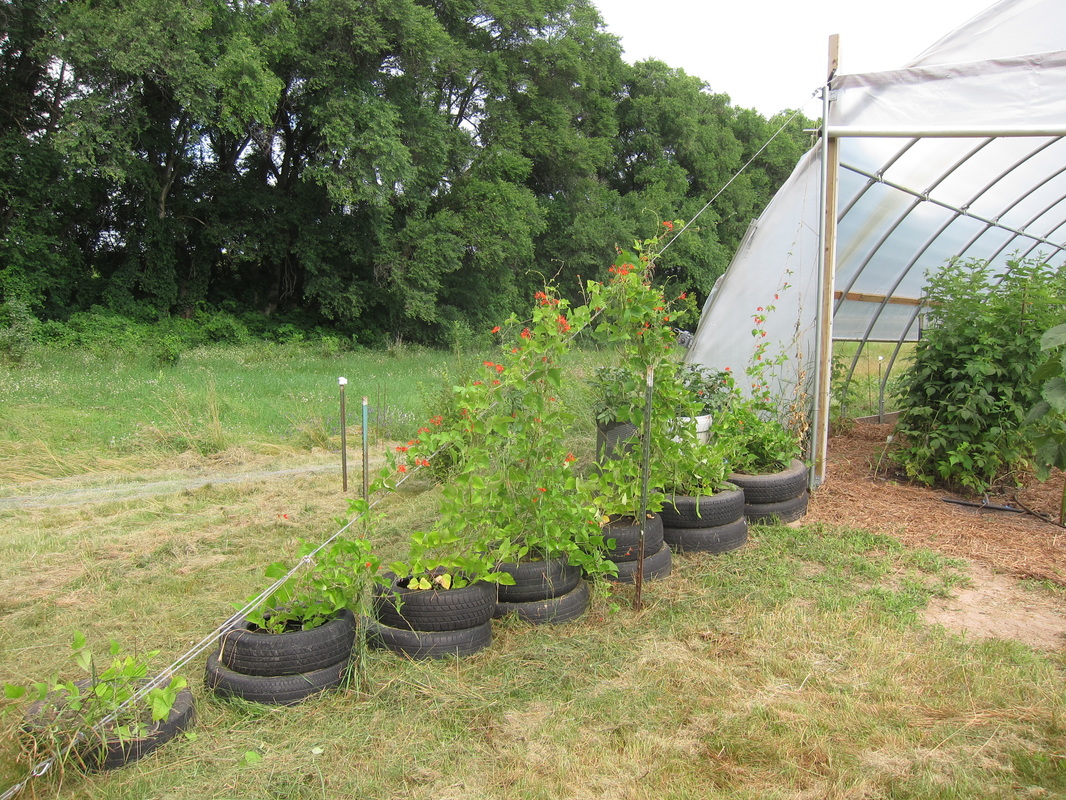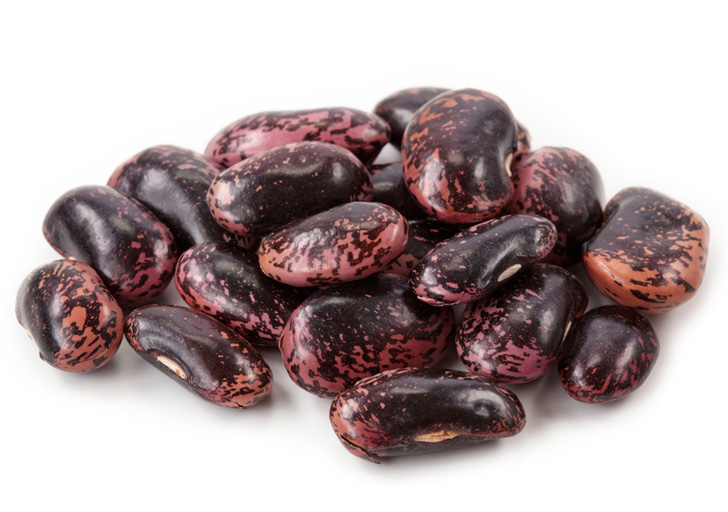| I planted scarlet runner beans on the guy wire of the hoop house to remind me not to run into it. I have a thing for being able to eat what I plant and I heard that the scarlet runner bean would not only climb and identify the wire but that it was both attractive and edible. So now that it is producing, I decided I should learn about it. |

The scarlet runner bean is not only good for attracting butterflies and hummingbirds (and protecting humans from crashing into guy wires), it is also said to be the most productive of beans. Interestingly, they are perennials. In their native Central America, that is; the winter kills them here. They were actually planted as an ornamental annual in English and Colonial American gardens as early as the 1600s.
| Not only are the scarlet runner beans edible, but the starchy roots, young leaves and even the flowers are edible. Some people even eat the immature pods raw before beans develop but it is safer to cook them. Like most beans, scarlet runner beans contains small amounts of lectin phytohaemagglutinin which can be toxic in large amounts. Dried beans need to be soaked and then cooked a long time to eliminate the risk. The older (harder, dryer) any bean is, the longer the cooking time required. |
| My beans are forming pods. To keep them blooming and prettier, I should be deadheading the flowers. But, since I like edible landscaping, even though the flowers are edible, I think I’d be more apt to eat the beans than the flowers. One site suggested eating them as “haricots vert.” I had no idea what that was…maybe some French recipe. I looked it up. “Haricots vert” is “the unripe fruit and protective pods of various cultivars of the common bean.” In other words, it’s the proper term for green beans (aka string beans, or snap beans), who knew? |
So you can enjoy the flowers (and munch on them while enjoying the beauty) or eat the leaves as an herb. When they are young (before the seeds develop) you can cook the pods as can be cooked as green beans. Or, you can let the inner beans mature and cook them fresh (like lima beans) or allow them to dry and used them like kidney beans. When you are all done you can dig them up and cook the roots and eat them, too. This just seems like an amazing plant. How come I’ve never heard of it before?



